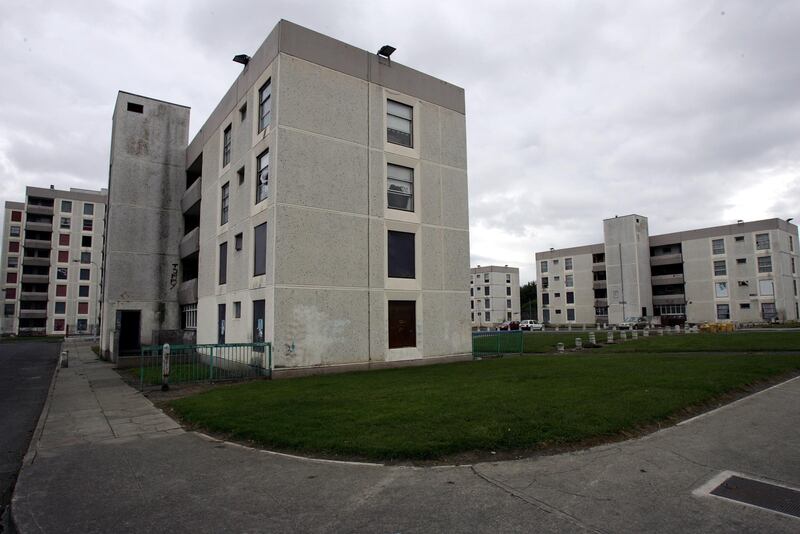Irish society has “paid a heavy price” for “allowing aspects of our lives to be commodified”, President Michael D Higgins has said.
Speaking in Dublin at the opening of an exhibition charting decades-long activism at St Michael’s Estate in Inchicore, Dublin, Mr Higgins said the project was “about some of most basic aspects of our lives together – housing”.
The exhibition, taking place in Richmond Barracks, has been put together by the St Michael’s Estate Regeneration Team and charts almost 70 years of development in the area, particularly the last 21 years of activism for social housing and retaining land in public ownership.
Dublin City Council’s latest proposal for the estate is a project of almost 600 cost-rental homes. However, it earlier this year terminated a contract with the lead architects behind the scheme, leading to uncertainty about its future.
READ MORE
The exhibition covers a timeline through 11 ministers for housing, four major regeneration plans, the demolition of 346 social homes and their replacement by 175 social homes on the 4.4-hectare (11-acre) site.
In the early 2000s, a regeneration master plan was put forward by the city council but then rejected by the Department of Environment in favour of a public-private partnership (PPP). The PPP was rejected by the local community and all members of the council on a vote. The PPP scheme, along with four others at O’Devaney Gardens, Dominick Street, Seán McDermott Street and Infirmary Road, collapsed when the economic crash hit in 2008.
Speaking at the exhibition, Mr Higgins said he was personally aware of the community’s struggles, activism and resilience, particularly in the 21 years since the first regeneration master plan collapsed.

“It is about citizenship in its base sense because it is about some of the most basic aspects of our lives together,” he said.
Stressing the importance of community, Mr Higgins said he had been reflecting on “the importance of us being able to live together in communities, rather than cut off from each other”.
“We have paid a very heavy price for individualism, and allowing aspects of our lives together to be commodified,” he said.
Mr Higgins said the exhibition was not a history lesson, but rather “an invitation to bring matters to a successful conclusion”.
“People have waited too long for any further disappointment,” he added.
The St Michael’s Estate Regeneration team said they put the exhibition together to give “a chronological sense of just how long it has taken not necessarily to have success, but to hold on to the land for public housing, facilities and public and democratic usage”.
“Whether the problem is described as economic or bureaucratic, the result has generally been the same in that the lack of housing has caused so much distress and suffering for people in this country,” they said.
“The exhibition says that the struggle over housing has been long and contested. However, we continue to work with the greatest hope for the right outcome.”












